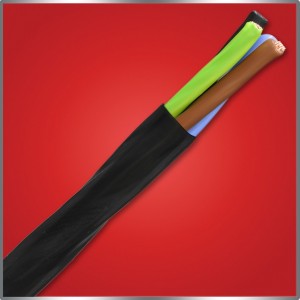The power of fluoropolymer products
When encountering a term such as fluoropolymer, it’s hard to image how complex of a name could belong to an extremely common product. By definition, flouropolymers are simply a type of thermoplastics. This means that at some point in the creation of the product, energy in the form of heat – hence “thermo” – was utilized. Regardless of how it is created, these materials are exceptionally strong and resilient, making them perfect for a wide variety of application. In fact, you’re likely to find fluoropolymers at work practically anywhere you go.
One of the most common uses of fluoropolymer technology is wire insulation for computer networks, semi-conductor manufacturing equipment, and automotive fuel hoses. Such industrial purposes as these make up approximately 85 percent of where fluoropolymers end up after creation. By managing to provide superior protection, even when shaped into thin sheaves, they can provide protection without impeding performance. Sitting at your computer or in your car, you are never more than a few feet away from a finely crafted thermoplastic that has been designed to reduce the risk of injury or damage.
The unique qualities which have made fluoropolymers vastly popular in multiple industries include their versatility, durability, heat resistance, and much more. Beyond cars and computers, they also provide added safety in the systems of large aircrafts. When dealing with a sensitive system, such as the wiring on an airplane, even the smallest tear or spark can create a disaster. The only type of material regularly trusted to prevent catastrophe in the skies are fluoropolymer products.
If you’re still uncertain of the extensive capabilities of thermoplastics, look no further than your own kitchen. You can find them in the nonstick coatings of your favorite cookware, as well. Due to their low surface energy, it is impossible for food to contaminate the nonstick coating’s surface. This process is similar to what happens when water hits a waxed car. Without wax, water will attach to the paint job, spread out to form a thin pool, and finally cling to the paint while slowly destroying it. If wax is applied, the water cannot get to the paint and instead stays in a beadlike shape due to the low surface energy of the wax. Similarly, liquid material from food will not be able to get past the fluoropolymer coating, leaving your cookware in pristine condition.
With the power of PTFE to withstand of over 300°C, there is practically no situation in which your thermoplastic coating will fail. Furthermore, virtually all chemicals lack the destructive capability to cause deterioration. Fluoropolymers can even be cut, bent, and shaped to whatever form for which the purpose calls, granting them unmatched versatility. You’ll find that with the assistance of products such as PTFE, even your own home is a much safer place to be.

